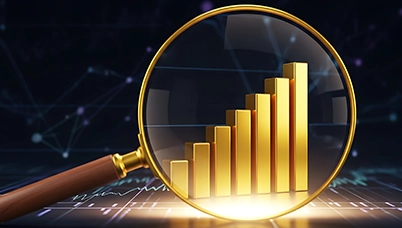Two birds with one stone
Posted On Sunday, Jan 01, 1950
The often used saying “hit two birds with one stone” can be applied to describe investments made in an ELSS (Equity linked savings scheme), as an ELSS scheme gives the investor twin benefits of tax savings and the potential for wealth creation by investing in equities for the long term.
The tax benefit is an immediate saving on the investments made, compared to just potential returns offered by other equity oriented schemes.
The benefits of investing in ELSS are:
As shown in Table 1, ELSS compares favorably with other tax saving products in terms of the lock in period and returns.
Table 1 - ELSS vs. Other Investment Options u/s 80 C
| Performance | PPF | NSE | ELSS | Bank Fixed Deposits |
| Lock-in period (years) | 15 (can withdraw 50% after 7 years) | 6 | 3 | 5 |
| Return | 8% | 8% | 12-15%* (based on NAV + Dividend if declared) | 9.25% (depends on prevailing interest rate) |
| Tax Treatment | Interest Tax Free | Interest Taxable | No tax on Dividend & Capital gains | Interest Taxable |
While the obvious benefits are stated above, the not so obvious questions such as those below needs to be answered
The stock market as represented by the BSE Sensex i n d e x , a s o n No v emb e r 2 8 , 2008, is trading at a price to earnings ratio ( P/E ) of 11.6 times the historical earnings and 10 t i m e s t h e estimated forward e a r n i n g s . T h e average historical P/E ratio (1995 to 2008) for the Sensex has been around 18 ( Source – Bloomberg ). Therefore all else remaining the same, at these levels the stock markets appear to be attractive even if there is an economic slowdown in the immediate future. The decline in stock prices in India this year, is largely due to the huge selling by FIIs due to global liquidity issues and lower expectations of Indian GDP growth in the future.
Market capitalization to GDP ratio, a widely used tool to judge the valuation of markets, currently stands at 0.63 times. Mature markets usually have market capitalization equal to their GDP. As the Indian market matures the investor could look forward to the Market capitalization to GDP ratio moving towards 1, as it was in FY08 and very close to this number in FY07 and FY06, as seen in Table 2.
Table 2 : India Market Cap to GDP Ratio

Bloomberg
In the recent years, the equity market performance in India has been strongly influenced by FII's (particularly the short term kind). Long term investors like pension funds have yet to make large investments in India.
As mature markets see a decline in population and consumption, the savers and consumers will come from emerging markets like India and China, offering huge investment opportunities to pools of money from the developed nations. Currently, India and China represent a population of 2.4 billion people, 40% of the world's population. However, their contribution to the world GDP is only 7%. The US and the European Union ( EU ), which have 13% of the world's population produce 59% of the world's GDP. The trends visible now suggest that there would be a shift, with China and India contributing higher to world output.
Concerns on GDP slowdown appear to be misplaced. The Indian economy has been quite resilient in the past and has grown at an average of 6.5% over the past 20 years. The real GDP growth of 9%, as seen in past few years, may be difficult to sustain. However we expect that the economy can easily sustain a real GDP growth rate of 6.5% over the next few years. Given this GDP rate and inflation of 6%, the nominal GDP can therefore be expected to grow at 12.5% and good companies can grow their profit at 15% CAGR or greater. Not many countries can offer these kind of growth rates. Therefore on a relative basis India is an attractive destination for investments. Exports contribute 18% of GDP whereas 67% is contributed by private consumption. This further highlights that India is more resilient to global economic shocks.
Table 3 - Potential Returns from Equities
| EPS downgraded by | Estimated EPS for FY10 | Estimated Sensex | Expected Returns |
| 1,025.4 (can withdraw 50% after 7 | 15,381 | 71% | |
| 15% | 871.6 | 13,074 | 45% |
| 20% | 820.3 | 12,305 | 37% |
| 25% | 769.1 | 11,536 | 28% |
Assumptions ( P/E Ratio = 15, Current Sensex Level = 9,000 ). The above table is illustrative and is based on assumptions given in the article. Expected returns may or may not be achieved. Assumptions ( P/E Ratio = 15, Current Sensex Level = 9,000 ). The above table is illustrative and is based on assumptions given in the article. Expected returns may or may not be achieved.
As mentioned earlier, the Sensex is trading at a price to earnings ratio ( P/E ) of 11.6 times the historical earnings and 10 times the estimated forward earnings - a whopping 35% discount to its long term average of 18 times historical earnings. The investment case for equities is therefore very strong, despite the current strong headwinds. The consensus earnings estimate by Bloomberg for the Sensex for FY10 is 1,025.4. Even if the Sensex trades at 15 times historical earnings by the end of FY10, the returns could be greater than 70% from the current levels of arround 9,000. As shown in Table 3 even an assumption of a 20% downgrade in earnings could still mean a return of 37% from the current levels.
The historical numbers on approximately 6.2% GDP growth over the past two decades and the corresponding return on equities as depicted in Table 4, make a strong case for investment in equities.
Table 4 - Historical Returns of the Sensex
| 15 years | 7% |
| 20 years | 14% |
| 26 years | 15% |
Returns (without dividend yield) as on December 1, 2008. CAGR = Compounded Annual Growth Rate.
Source: Bloomberg
Equities are an attractive asset class for investors with a long term horizon. An ELSS scheme is an attractive investment option with a minimum 3 year time horizon. Quantum Mutual Fund is launching an ELSS scheme – namely Quantum Tax Savings Fund. The NFO of the scheme is closing on December 13, 2008. Investment under this scheme will qualify for tax benefits u/s 80 C of the Income Tax Act.
Investors will benefit from the process driven investment management approach, which incorporates:
An investor in Quantum Tax Saving Fund, can thus gain from the twin benefits of tax savings and the potential for wealth creation, by investing in equities for the long term.
Suggested allocation in Quantum Mutual Funds
| Quantum Long Term Equity Fund | Quantum Gold Fund (NSE symbol: QGOLDHALF) | Quantum Liquid Fund | |
| Why you should own it: | An investment for the future and an opportunity to profit from the long term economic growth in India | A hedge against a global financial crisis and an "insurance" for your portfolio | Cash in hand for any emergency uses but should get better returns than a savings account in a bank |
| Suggested allocation (New) | 46% | 12% | 42% |
| Suggested allocation (old) | 80% | 15% | 5% |
Related Posts
-

Gold Monthly for December 2025
Posted On Thursday, Dec 04, 2025
After a series of events and a strong rally in October 2025, gold demonstrated a mixed performance in November 2025, moving back and forth within a defined range.
Read More -

Equity Monthly for December 2025
Posted On Wednesday, Dec 03, 2025
Markets continued the rising trend in October with Sensex gaining 2.2%.
Read More -

Debt Monthly for December 2025
Posted On Tuesday, Dec 02, 2025
As we approach the end of the calendar year, we find ourselves at a pivotal moment, with the market split on the likelihood of an upcoming rate cut.
Read More




